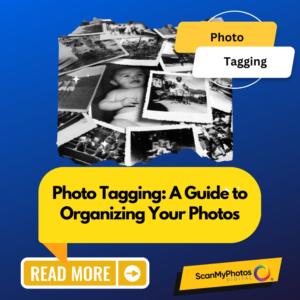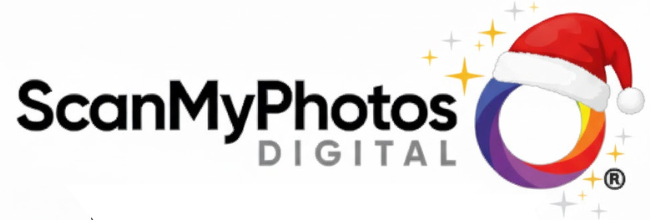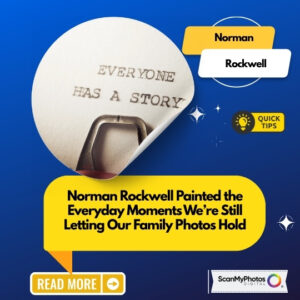This guide to tagging to organizing your photos is today’s article for PICTURE THIS! At the end, we share four of our favorite tagging software tools.
 Learn the importance of photo tagging and how ScanMyPhotos can help you organize your digitized memories. Discover simple steps to tag your photos for easy access and relive cherished moments.
Learn the importance of photo tagging and how ScanMyPhotos can help you organize your digitized memories. Discover simple steps to tag your photos for easy access and relive cherished moments.
Introduction: Preserving Your Precious Moments
When you digitize your old photos with ScanMyPhotos.com, you unlock a world of possibilities. These digitized memories allow you to relive your past, share stories, and keep your precious moments alive. But as your digital collection grows, it becomes essential to keep them organized. That’s where photo tagging comes into play!
What is Photo Tagging?
Photo tagging involves adding labels or keywords to your digital photos to describe the content. Think of it as attaching virtual sticky notes to your pictures. These tags serve as identifiers, making locating specific photos in your vast collection easier. Tags can include names of people, places, events, and more.
The Importance of Photo Tagging:
Effortless Retrieval: With thousands of digital photos, finding a specific image can be like searching for a needle in a haystack. Tags streamline the process, allowing you to find the photos you want to see quickly.
What happens of you don’t organize and tag your scanned photos:
Neglecting to sort and tag your newly digitized photographs can result in multiple serious complications, making it hard to relish and spread your valued recollections productively. Here are a few of the main issues you might experience. Misplaced Memories: With no suitable organization and tagging your digital photo collection can speedily become an untidy jumble. Searching for specific pictures amidst many images turns into a laborious mission, and you could wind up losing access to invaluable memories. Time-Intensive Search: Imagine spending hours endlessly browsing through many photographs to identify one particular image you want to observe. Inadequate organization forces you to spend more time in searching, taking away the pleasure and practicality of immediately revisiting precious moments. Reduced Storytelling: Every photo retains a narrative behind it, whether it is a family trip, a special occasion, or a celebratory achievement. The context and details that bring these tales to life are gone without tags, causing incomplete and less attractive accounts. Ineffectual Sharing: Dispersing photographs becomes less delightful when recipients grapple to understand the worth of each snapshot. Family and friends might miss out on the emotional connections and accounts linked to the photos, reducing the effectiveness of your shared memories. Restricted Accessibility: Over time, your photo compilation may become so disorderly that you could be reluctant to display it to others. The lack of organization could limit your aptitude to show your recollections and revive experiences with others. Skipped Opportunities: Unlabeled photographs may also prevent your inventive undertakings. Regardless of whether you are formulating photo albums, slideshows, or montages, the absence of good organization may result in lost chances to exhibit your recollections in revolutionary and captivating ways. Struggle Preserving Legacy: As time passes, memories become more precious. If you have not sorted or tagged your digitized photographs, future generations may struggle to comprehend the importance of the images, resulting in a disappearance of family heritage and history.
Storytelling: Tags help you piece together the narrative behind each photo. Whether it’s a family vacation, a birthday celebration, or a graduation ceremony, tags provide context and make your memories come alive.
Sharing Made Simple: When you share photos with friends and family, tags ensure everyone understands the significance of each image. It’s like telling a story without saying a word.
How to Tag Your Photos Digitized by ScanMyPhotos:
Choose Descriptive Keywords: After receiving your digitized photos from ScanMyPhotos, select keywords that best describe the content. For instance, if you have a photo from a beach vacation, use tags like “beach,” “vacation,” and “family.”
Use Names and Dates: Include the names of people in the photos, along with relevant dates. This adds a personal touch and helps you remember important details. Create Categories: Organize your tags into categories, such as “Holidays,” “Family,” “Travel,” and more. This categorization makes searching even more efficient. Software Assistance: Many photo management software options, such as Adobe Lightroom or Google Photos, offer tagging features. Utilize these tools to add and manage your tags effectively.
Four Photo Tagging Programs:
Adobe Lightroom — Adobe Lightroom is a powerful photo management and editing software. It allows you to add keywords, labels, and other metadata to your photos, making organization and retrieval a breeze. Its user-friendly interface and robust tagging features make it popular among photographers and hobbyists.
Google Photos — Google Photos offers a convenient way to store, organize, and share digital photos. It automatically suggests tags based on its advanced image recognition technology. You can also manually add and edit tags to enhance organization and facilitate easy searching within your collection.
ACDSee — ACDSee is a comprehensive photo management software with robust tagging capabilities. It enables you to add keywords, ratings, categories, and labels to your images, allowing for efficient organization and quick retrieval. Its customizable metadata options make it suitable for both amateur and professional photographers.
digiKam — digiKam is an open-source photo management software designed for Linux, Windows, and macOS. It offers a range of features, including advanced tagging and labeling options. You can create and manage tags, apply them to multiple photos at once, and even use hierarchical tags for more intricate organization.
<< Learn more about ScanMyPhotos digitization services >>



